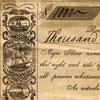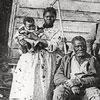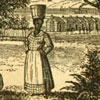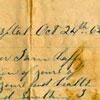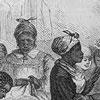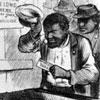Download Transcript: Slave Receipt
Slavery, legally sanctioned in the south, and for many years in the north as well, was supported at every turn by legal and bureaucratic structures. The slave receipt discussed in this video records the sale of a female slave named Mary and her child, Louisianna, for $1,000 on September 17, 1853.
Careful analysis of the receipt demonstrates the details of a single transaction as well as the larger significance of printed receipts and the information they convey. In this video, Tom Thurston, Education Director of the Gilder Lehrman Center for the Study of Slavery, Resistance, and Abolition, discusses the receipt as well as the larger context of slavery.
Source: National History Education Clearinghouse, Examples of Historical Thinking – Slave Reciepts – Looking at the Document (Fairfax, VA: Roy Rosenzweig Center for History and New Media, 2011), accessed September 20, 2011. Full video in National History Education Clearinghouse, “Slave Receipts,” accessed September 20, 2011; “[Slave Receipt],” image, September 17, 1853, National History Education Clearinghouse, accessed November 19, 2018.



